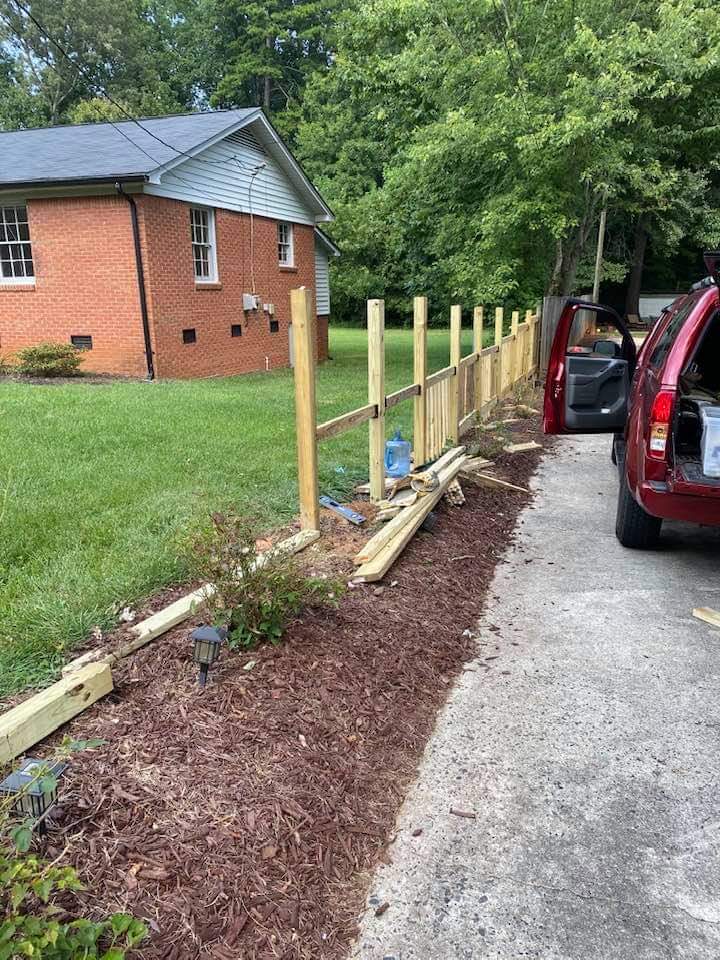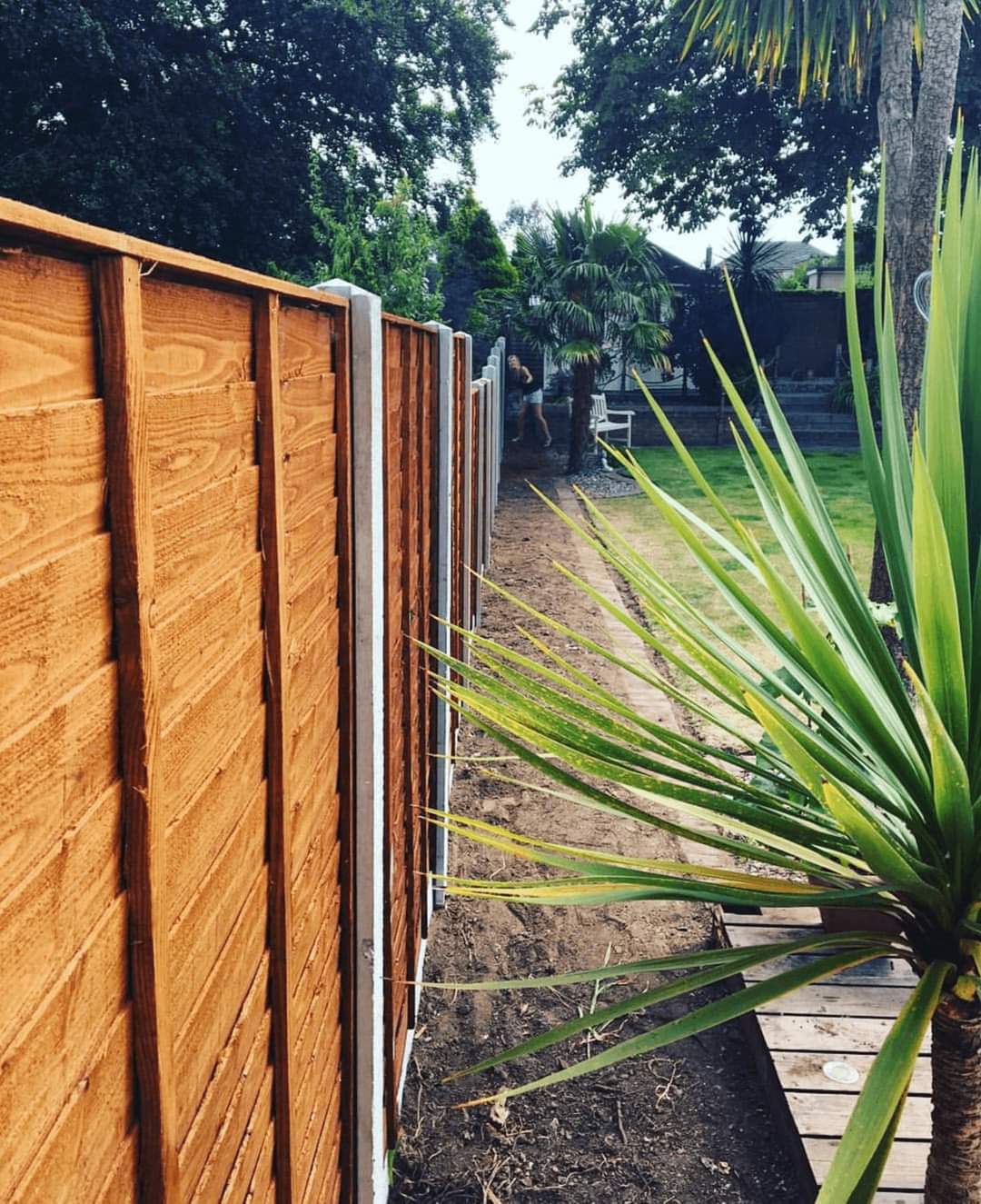A GUIDE TO GARDEN FENCE LAW

A GUIDE TO GARDEN FENCE LAW
All too frequently people never considered fencing laws before putting up a fence, that brings about this article (A GUIDE TO GARDEN FENCE LAW). In fact most laws about putting up a fence seem rather absurd. However there are quite a number of laws that a wise person would give thought to.
The most common mistake is the believed idea about the height of the fence. People searching through the internet would find the maximum height to be two meters, (this may differ from front to rear or even the side of property) however, what they fail to realise is that the most important details have been missed out. The maximum height of garden fencing is ‘two meters without planning permission’. So technically, a person can put up a fence as high as they want with proper planning permission if passed.

This can get somewhat tricky. For instance, fences that are lower in height than two meters do not need planning permission (but may need permission) from local authority if rented from a council or housing association, but if a fence is two meters high, planning permission would be needed to put up a trellis on top of it, as a trellis further heightens your fence. In fact anything higher than two meters other than plants or shrubs could be problematic. Anything additional above two meters of fencing would require proper planning permission.
For Home owners who have garden fencing on both sides, things can get even trickier. Frequently, neighbours share fences with other neighbours.
Common concerns are who owns the fence? Who’s responsibility is it to repair the fence? Which neighbour owns which fence? And here is where you would find a load of misleading information. Apparently, according to the knowledge of some on the internet, if a person stands with his back to the house, he owns the fence on the right hand side.
If one is to give some thought to it, it would mean that if you are entering your house from the front door, you own the fence of the neighbours at your left side. However if you kept walking and entered the back garden, you would own the fence on your left
hence they are your responsibility for repair.
The exact same principle of owning fencing is applied to farm lands where a ditch or a hedge divides the land. You can’t go digging ditches on your neighbour’s property. Similarly you cannot dig a ditch and throw up a mound of soil on your neighbour’s land. So the ditch must be on your land and so must the mound of soil that you throw up. To sum it up both the ditch, the mount of soil and also the hedge that grows on it must be on your own property and not your neighbours.
So this is where seemly complex laws start making sense if one is to look at them and use common sense.
One the most common consideration is safety. If your fencing is on the edge of public property, then the rule is that anything unsafe about the property is illegal. A possible injury to a passerby, barbed wires on top of fences and protruding nails are some examples of concerns of public safety and logically that makes sense. You would not want to face any liability for a careless passerby bumping into to the barbed wire on your fence.
Another apparently mainstream yet stupendous idea among people is putting up shards of glass on top of the fences to deter buglers.
This is now illegal, since someone trying to break in to your property might injure themselves while doing so and according to the law that injury is now the liability of the property owner.
The simple laws are often mistakenly changed by people. There are people who would figure out their own reasons into making sense out of these laws but the fact is they are reasonable.
With the modern fencing of today where one side is better then the other, it was lead to believe that the fencing with the nice side should face to that of the neighbours, how ever this is not a regulation and was only done out of common decency and respect for the neighbour for any inconvenience or disruption possibly caused..
This how ever does cause some upset between neighbours so would be something to take into great consideration when making your choice of which way for it to face.
There are options available to ensure both parties have a good side but this does come at a greater cost.
A GUIDE TO GARDEN FENCE LAW
You may think this is a strange topic, but lots of homeowners remain unaware of the laws regarding garden fences until they find themselves embroiled in a frustrating and costly boundary dispute. With fences being central to many neighbourhood conflicts, we believe that everyone who owns a property in Isle of Wight should have a better understanding of the law. So, here you’ll find some expert advice to help you stay well-informed about your property rights and obligations as a homeowner.
Establishing Fence Ownership
When trying to determine which fence is yours, the best place to begin is your deeds. You’ll find a scale plan of your property highlighting your boundary lines with a T-mark (a symbol that looks like the letter “T”) to represent the wall or fence ownership.
Sometimes, adjacent properties have joint ownership over a fence or wall (something that is referred to commonly as a party fence or wall). If that is the case, you’ll see two T symbols joined together making an H-mark (which looks like an elongated letter “H”).
Virtually every modern property deed will have clear markings for boundary ownership, but if you’re living in one of the older properties in Isle of Wight, you may find that the boundaries are less obvious. In such cases, something known as “presumptions” will come into play. It is presumed that fence posts are placed on the land belonging to the owner of the fence so the rear of the fence which has the posts showing will face their property.
Although it has been traditionally believed that you own the fence on the left-hand side of your property, you can’t guarantee that will always be the case. Checking the deeds is always the first port of call.
Who Takes Responsibility For Garden Fence Maintenance?
As you’d expect, the owner of the fence will usually be responsible for fence maintenance, while party fences and walls are both neighbours’ joint responsibility to maintain. It can get a little confusing if the deeds don’t indicate ownership clearly, or if they include covenants relating to the repair of the wall or fence in question. In a few cases, even documents held by the Land Registry may be misleading. If one neighbour has taken responsibility for maintaining a fence for an extended period of time, they may have become legally responsible for its upkeep.
Am I Legally Allowed To Force My Neighbour To Make Repairs To The Fence?
There are no laws that require anyone to repair fences, even when they’re in extremely poor condition, so essentially, you can’t legally force your neighbour to carry out repairs. You may find it best to leave the fence in place and simply erect another for yourself on your own land in such a situation.
What Do I Need To Know If I’m Erecting A Fence?
If the property deeds indicate that a fence is your responsibility, then you are responsible for erecting a new fence. If it is a party fence, both neighbours must take responsibility. A garden fence height may be determined by your local authority, but in most cases, it must be no more than 2 metres high to be permitted with no planning permission required. If the property is a listed building, planning permission will probably be needed, as will any fence that is over 1m in height and adjoining a public road. Restrictions will typically apply to any property with a front open to public paths or highways. Therefore, consulting with the local authority before commencing work is a good idea.
SEE ALSO : 8 WAYS REAL ESTATE TECHNOLOGY CAN RUIN YOUR BUSINESS
With this article titled ; a guide to garden fence law, should now be able to understand a guide to garden fence law.
Comments are closed.